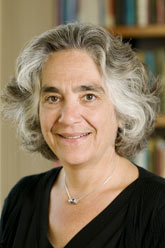
Handy Links
SLAC News Center
SLAC Today
- Subscribe
- Archives: Feb 2006-May 20, 2011
- Archives: May 23, 2011 and later
- Submit Feedback or Story Ideas
- About SLAC Today
SLAC News
Lab News
- Interactions
- Lightsources.org
- ILC NewsLine
- Int'l Science Grid This Week
- Fermilab Today
- Berkeley Lab News
- @brookhaven TODAY
- DOE Pulse
- CERN Courier
- DESY inForm
- US / LHC
SLAC Links
- Emergency
- Safety
- Policy Repository
- Site Entry Form

- Site Maps
- M & O Review
- Computing Status & Calendar
- SLAC Colloquium
- SLACspeak
- SLACspace
- SLAC Logo
- Café Menu
- Flea Market
- Web E-mail
- Marguerite Shuttle
- Discount Commuter Passes
-
Award Reporting Form
- SPIRES
- SciDoc
- Activity Groups
- Library
Stanford
Around the Bay
From the Director: 20, 30, 40, 50 Year Awards Ceremony

I had the pleasure Wednesday evening to participate in a ceremony honoring staff who have been with SLAC 20, 30 or 40 years. These are employees who joined the lab when Burt or Pief was director of SLAC. If they came to work at the Stanford Synchrotron Radiation Lightsource, then they worked under the leadership of Seb Doniach and Artie Bienenstock.
In preparing my remarks for Wednesday's event, I was struck by how much SLAC has changed through the decades. I realized that for a relative newcomer like me (I'm celebrating my nine-year anniversary at SLAC in April), it has felt as though there has been a huge amount of change at the lab these past few years. We turned on the Linac Coherent Light Source, SPEAR3 and the Fermi Gamma-ray Space Telescope, and we turned off the B Factory and the Final Focus Test Beam, all in a period of about five years.
But for staff who have been at SLAC for 20 or 30 or 40 years, change is nothing new! In fact, on an absolute scale, our pace of change has actually slowed down from the early days.
People who joined SLAC 20 years ago came to a totally different laboratory. SLAC in 1991 was focused on SSRL and on the SLAC Large Detector running at the Stanford Linear Collider. SSRL had just become a fully dedicated synchrotron facility, independent of the linac with its own injector. The SLAC Large Detector had just rolled onto the beamline for the first time and the Mark II detector was being retired. The B Factory didn't really exist yet, although there were already some discussions about it. The Fermi Gamma-ray Space Telescope was not on anyone's radar screen.
Staff who came to SLAC 30 years ago have seen even more change. In 1981, the original Positron Electron Project accelerator, PEP-I, had just been turned on, and the SPEAR storage ring was being shared between the particle physicists and the growing synchrotron radiation community. Accelerators were built faster back then. SLAC was already starting the push for the Stanford Linear Collider as PEP construction was being completed.
For those who came to SLAC 40 years ago in 1971, construction on the SPEAR ring in the research yard was just starting. It had been a mere five years since the first beam traveled all the way down the original SLAC linac in 1966. We didn't have any 50-year awards on Wednesday night but if we had, it would have been because someone was hired by Stanford in 1961, before SLAC was even a reality. The lease had not yet been signed. The SLAC site dedication took place on August 10, 1962.
So while it might feel like much has changed in the past few years, you can see that this transformation is reflective of SLAC's history. It is a history of frequent reinvention and scientific advancement, and it is why the laboratory has been so successful.
I am reminded of a conversation I had when I was considering the move to SLAC nine years ago. I had solicited advice from a senior leader in the field and he pointed out that SLAC has a history of innovation. He told me:
The history of SLAC is a collection of miracles driven by the wits of the wonderful SLAC staff who work there. They are people who are used to living by their wits. Over and over, they have reinvented their future. They are survivors.
He had no doubts that the future at SLAC would be every bit as exciting as the past had been, and having watched all that the lab has accomplished over the last few years, I certainly have to agree. "The history of SLAC is a collection of miracles driven by the wits of the wonderful SLAC staff who work there." The celebration Wednesday was a great opportunity to honor some of our wonderful SLAC staff!
